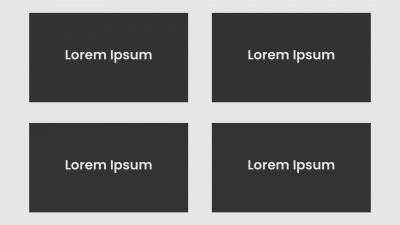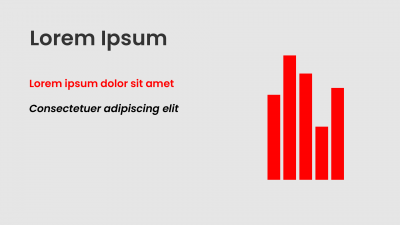Learning Support Responsibilities Preparation
Learning support and teaching (Part 2)
Case studies
- Disability support service anticipates a learning situation that might be inequitable:
- During the COVID-19 lockdown teachers and learners were asked to work from home. Online teaching was adopted as a temporary measure and institutions made sure that video-recorded lectures, tutorials and labs were made available as podcasts.
- One university’s student disability services reminded all staff of the existing equity policy and inclusive teaching and learning guidelines to ensure that disabled learners were not disadvantaged during such rapid changes.
- Some disabled learners may work through a disability office to inform lecturers of their needs, while others may approach teaching staff directly. With some tertiary providers there is still quite a big resistance to recording lectures, which can create many barriers for disabled learners. However this may be changing - support for this needs to be coming from the top to have some consistency.
- One safeguard is requiring any teaching staff to notify the disability office of variations to assessment and teaching methods that learners receive. Forward planning for learners, for example, with learning (intellectual) disabilities is essential.
It is important to involve disability support staff early on and to develop transition plans for those learners transitioning from supported learning courses. Funding should be available for both social and academic mentors. The Australian universities have been providing explicit inherent requirements for their programmes.
For example, the University of Sydney has Inherent Requirements for their Animal and Veterinary Medicine programme. The document states that “Reasonable adjustments (accommodations) are provided to assist learners to achieve the inherent requirements, not as a substitute for them” i.e. reasonable accommodations need to balance the interests of everyone affected, including learners and the university. - This insightful video discusses inherent requirements on the ADCET webpage.
- For a New Zealand example, the disability information and support service at Otago University has developed the following templates for their learners and staff.
They have shared these to give you ideas to develop your own templates: - When developing programme and course specifications:
- Identify and remove barriers to participation and achievement for disabled learners.
- Account for impairments in course delivery, including individual requirements and learning styles and supports.
- Ensure course approval includes informed consideration of impairments and involves disability services staff.
- Provide sufficient information to enable learners and their support networks to make informed decisions.
- Specific transition strategies to assist disabled learners to move successfully to higher studies or employment are implemented.
General classroom strategies
- Face the class when speaking.
- Repeat discussion questions from other learners since not all learners will be able to hear their peers.
- Give both oral and written instructions.
- Put key phrases on your classroom notes or on the whiteboard/blackboard.
- Prepare course materials early. This will ensure that you, the learner and any other support staff have enough time to make any adaptations such as enlarging the materials or providing them online in accessible formats.
- Provide learners with a list of new technical terms or subject-specific abbreviations.
- Make assignment sheets and reading lists available in electronic format and offer to enlarge text.
- Provide all lecture notes electronically so that learners can modify them to accommodate their impairments.
For example, large text (e.g.18 point type) for learners with vision impairments or specific learning difficulties (e.g. dyslexia), Braille printed on coloured paper, notes for an interpreter.
- Do not walk around the class or pace back and forth.
- Repeat discussion questions while facing the class.
- When using videos provide a written summary of what the video shows in advance of the session or arrange for it to be subtitled or provide a transcript.
- In any teaching situation make sure that any disabled learner has an unobstructed view of the teacher.
Use of PowerPoint presentations
- A dark background and light text is best for dark rooms.

- A light background and dark text is best for light rooms.

- Keep the same background colour throughout the presentation.

- Avoid patterned backgrounds.

- Minimise volume of text – use phrases not sentences. Use bullet points.

- When using graphics/visuals to add interest, be aware of the colour combinations.

- Only use one or two text colours, one or two font styles and one or two animations.

- Put the presentation on the internet for learners to download.

Choosing an appropriate lecture theatre

Questions to consider during the selection of lecture theatres:
- Has it got a hearing loop for learners with hearing impairments?
- Check the microphone is in place and working correctly for Deaf or hearing impaired.
- Has it got wheelchair access that doesn’t make these learners conspicuous?
- Will it be suitable for a learner who has a guide dog?
- Has it got power points in the front to place tape recorders or laptops?
- Has it got networked points for accessing the internet as part of a lecture
- Is the room going to be overcrowded and is there extraneous noise?
- Is there enough time for learners with mobility impairments to get to their next lecture.
Making tutorials inclusive
- Consider seating arrangements – a semi-circle so that learners can lipread.
- Only allow one individual to talk at any one time.
- Repeat what the learner has said.
- Rephrase what the learner has said if it isn’t particularly clear.
- Use a flip chart or whiteboard to aid what the learner has said and allow them to follow.
- Put the main ideas of discussion on a board or a chart.
- Provide a discussion paper prior to the tutorial to enable learners to prepare and increase their confidence levels.
- Have breaks if the tutorial is particularly long so learners remain active participants.
Good laboratory practice
- Always discuss procedures and any special safety considerations with the learners before allowing an experiment to begin.
- Safety rule sheets should be available in alternate formats.
- Arrange and discuss evacuation plans for fire and other emergencies.
- Give disabled learners an opportunity to become familiar with the laboratory before the first session.
- Discuss and resolve learning support needs and consult with the learner as to whether there are tasks too risky for them to handle alone and if they need support.
Work placements and field trips
- Seeking placements in accessible contexts.
- Providing specialist guidance on international placements.
- Re-locating field trips to alternative sites or providing alternative experiences or comparable opportunities which satisfy the learning outcomes.
- Working with placement providers to ensure accessibility.
- Providing support before, during and after placements that takes account of the needs of any disabled learners, including transport needs.
Useful resources
- The Australian Disability Clearinghouse on Education and Training includes valuable teaching and learning resources.
- UDLL Universal Design for Learning: A Best Practice Guideline
- Accessible Curricula Good Practice For All
- OIA Good Practice Framework for Supporting Disabled Students
- QS Quacquarelli Symonds
- Some New Zealand tertiary providers have developed useful online brochures, handouts and guidelines for disabled learners, their family/ whānau and for staff:
- Below are some simple inclusive teaching and learning strategies that can be adopted by teaching staff:
- The Medical Deans of Australia and New Zealand have recently released Guidance on medical program applicants and students with a disability.
- Trinity College Dublin Disability Service developed useful information for parents of disabled learners.
- University of Washington Communities of Practice.
This page is current as of May 2022
Print this page
